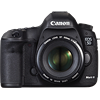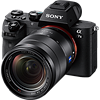Main
Model
Price
Advantages
launch
Announced
Body type
Camera subcategory
Sensor
Effective pixels
Max resolution
Sensor size
Sensor type
Processor
Image ratio w:h
Other resolutions
Sensor photo detectors
Image
ISO
Boosted ISO (minimum)
Boosted ISO (maximum)
White balance presets
Custom white balance
Image stabilization
Uncompressed format
JPEG quality levels
Image stabilization notes
Photography features
Minimum shutter speed
Maximum shutter speed
Aperture priority
Shutter priority
Manual exposure mode
Subject / scene modes
Built-in flash
External flash
Continuous drive
Self-timer
Metering modes
Exposure compensation
AE Bracketing
WB Bracketing
Screen / viewfinder
Articulated LCD
Screen size
Screen dots
Touch screen
Screen type
Live view
Viewfinder type
Viewfinder coverage
Viewfinder magnification
Viewfinder resolution
Videography features
Resolutions
File Format
Videography notes
Microphone
Speaker
Optics & Focus
Autofocus
Digital zoom
Manual focus
Number of focus points
Lens mount
Focal length multiplier
Physical
Weight (inc. batteries)
Dimensions
Environmentally sealed
Battery
Battery details
Battery Life (CIPA)
Storage
Storage types
Storage included
Connectivity
USB
HDMI
Wireless
Wireless notes
Remote control
Microphone port
Headphone port
Other features
Orientation sensor
Timelapse recording
GPS
GPS notes
Samples
Videos
Summary
The Alpha 7 II maximum resolution of 6000 x 4000 pixels (24 megapixels) is better than the Canon EOS 5D Mark III maximum resolution of 5760 x 3840 pixels (22 megapixels). The Canon EOS 5D Mark III has larger sensor compared to the Alpha 7 II: Full frame (36 x 24 mm) versus Full frame (35.8 x 23.9 mm). It is very important difference between these cameras as big sensor allows you to make pictures of the better quality. The Alpha 7 II offers more number of white balance presets - 10. This specification gives you more control over colour. The Alpha 7 II has image stabilization which will allow the camera owner to make clearer photos of non-moving subjects in dim light when the camera owner is not using the flash. The Sony Alpha 7 II offers more powerful 4 digital zoom. The Alpha 7 II has more focus points than the Canon EOS 5D Mark III: 117 vs 61. More number of focus points means more convenience while attempting to focus on objects which are not centred.
The Sony Alpha 7 II is produced with tilting LCD which will let you to make amazing selfies. The Alpha 7 II display is better as it offers more screen dots 1,230,000 in compare to 1,040,000 dots of the Canon EOS 5D Mark III screen. The higher dot count display is better for reviewing images on your camera.
The Sony Alpha 7 II has built-in Wi-Fi which will help the camera owner to transfer pictures quick and easy. The Canon EOS 5D Mark III battery life is better in compare to the Alpha 7 II battery life. In accordance with CIPA standards the camera owner will be able to capture 950 shots with the EOS 5D Mark III and only 350 with the Alpha 7 II. The Sony Alpha 7 II weighs 599g which is 351g lighter than the weight of the Canon EOS 5D Mark III. The Canon EOS 5D Mark III can utilize optional accessory GPS devices. Recording GPS data can be useful for the travel photographer, to be able to go into the image metadata and see exactly where a photo was shot.
The Alpha 7 II has 13 advantages and the Canon EOS 5D Mark III only 8 so the Alpha 7 II will become the best choice. Get the lowest price on Amazon.


